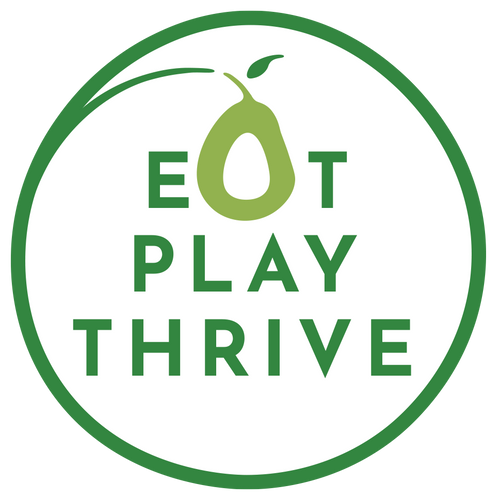 August is Kids Eat Right Month®, the Academy of Nutrition and Dietetics and the Academy Foundation's annual campaign to celebrate the importance of healthful eating and active lifestyles for children and their families. As a member of the Academy and a pediatric dietitian I love that there is a whole month we can dedicate to promoting healthful habits around physical activity and eating.
August is Kids Eat Right Month®, the Academy of Nutrition and Dietetics and the Academy Foundation's annual campaign to celebrate the importance of healthful eating and active lifestyles for children and their families. As a member of the Academy and a pediatric dietitian I love that there is a whole month we can dedicate to promoting healthful habits around physical activity and eating.
Why is this important? To start, the 2020-2025 Dietary Guidelines for Americans noted that many school-aged children are not eating enough of the recommended amounts of certain food groups, including vegetables, fruits and dairy. This may result in them not meeting important nutrients for health and growth. Also, more and more kids are becoming more sedentary, with increased hours of screen time vs. physical activity.
There are many small things to do to influence healthful habits for your kids. I challenge you to use this month as a reset, to reevaluate your family’s eating and physical activity habits and make positive changes. Here are some places to consider:
Start Early
Introduce your child to a wide variety of foods as a baby and toddler. They are growing rapidly during this time and nutrition is super important. This is also a time to start building healthy habits. Having young kids understand expectations around eating balanced and expecting fruits, vegetables, protein foods at meals and snacks can be a great habit to start early.
Shop Smart
To encourage healthful eating, make a plan and involve your kids in that plan. Families have good success with writing out the menu for the week and asking kids what they may want so that there are no surprises and more buy in from your kids. Create a shopping list before going to the store, based on the plan you created for easier shopping trips. Also get your children involved in selecting foods from the store, such as fruits and vegetables, which will appear at the breakfast, lunch or dinner table.
Cook Healthy
Get children involved in cooking healthful meals together. So try giving your child some tasks involved in the preparation of meals. These should be age appropriate, but even small kids can gather ingredients, clean produce, or mix. They will learn about food and may even be curious enough to try new foods they helped prepare. When kids are involved in both the planning and preparing nutritious meals, they are more likely to try new foods, and also will have a greater understanding of nutritious, healthful foods that will benefit them for a lifetime.
Eat Together
When possible, enjoy family meals together for an opportunity to bond and embrace healthful habits as a family. Family meals encourage healthy family relationships, varied and healthful eating habits, improved academic performance, and benefits mental health as well.
Create Healthful Habits
You can help create healthful habits in your kids by serving as a role model and creating meals that are balanced to teach them.Fill half your plate with fruits and vegetables (or roughly create meals that are made up of half fruits and vegetables) and divide the rest of your plate (or meal) into grains or starches, especially whole grains like brown rice or whole wheat pasta and a lean protein such as cooked beans or grilled chicken. For beverages, children should mainly drink water or milk. Drinks and foods with added sugars should be avoided in children younger than 2 and limited for older children.
Get Moving
Being active together as a family is a great way to bond, but also regular physical activity is vital to strengthen muscle and bones, promote a healthy body weight, develop social skills and build self-esteem. Preschool aged children should be encouraged to be active throughout the day and for older children it’s recommended to get 60 minutes of moderate-to-vigorous activity daily. Find activities your kids like and try to do those activities with them. You can take a walk together after dinner, go on a hike, a family bike ride, play catch or soccer. I say whatever peaks their interest, foster it.
Get Talking
Eating nutritious foods can sometimes be a challenge for kids, but it’s amazing what talking about food and including your kids in some of the decision making process can do. Talk to your kids about what you enjoy about particular foods, or describe foods as you eat them to your kids. Talk about why you serve certain foods like fruit and vegetables, proteins, whole grains and calcium-rich foods. And you can ask them why they like certain foods, and encourage them to help you build balanced meals.
Most of these suggestions are small adjustments to your routine, but when made a habit for you and your kids can have a big impact on their lifelong health. You can also find more healthy resources for kids from the Academy of Nutrition and Dietetics.
